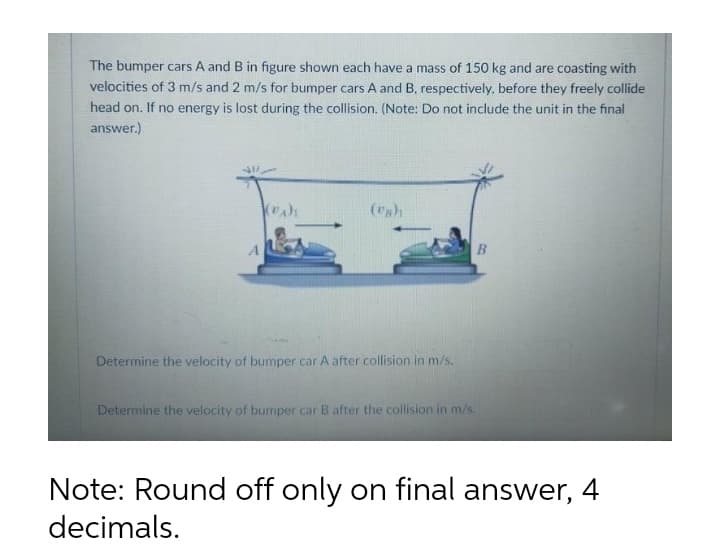The bumper cars A and B in figure shown each have a mass of 150 kg and are coasting with velocities of 3 m/s and 2 m/s for bumper cars A and B, respectively, before they freely collide head on. If no energy is lost during the collision. (Note: Do not include the unit in the final answer.) Determine the velocity of bumper car A after collision in m/s. Determine the velocity of bumper car B after the collision in m/s.
The bumper cars A and B in figure shown each have a mass of 150 kg and are coasting with velocities of 3 m/s and 2 m/s for bumper cars A and B, respectively, before they freely collide head on. If no energy is lost during the collision. (Note: Do not include the unit in the final answer.) Determine the velocity of bumper car A after collision in m/s. Determine the velocity of bumper car B after the collision in m/s.
Related questions
Question
2

Transcribed Image Text:The bumper cars A and B in figure shown each have a mass of 150 kg and are coasting with
velocities of 3 m/s and 2 m/s for bumper cars A and B, respectively, before they freely collide
head on. If no energy is lost during the collision. (Note: Do not include the unit in the final
answer.)
B
Determine the velocity of bumper car A after collision in m/s.
Determine the velocity of bumper car B after the collision in m/s.
Note: Round off only on final answer, 4
decimals.
Expert Solution
This question has been solved!
Explore an expertly crafted, step-by-step solution for a thorough understanding of key concepts.
This is a popular solution!
Trending now
This is a popular solution!
Step by step
Solved in 5 steps with 5 images
